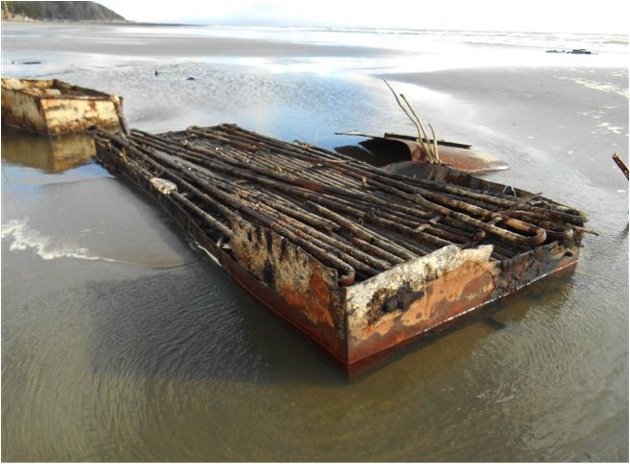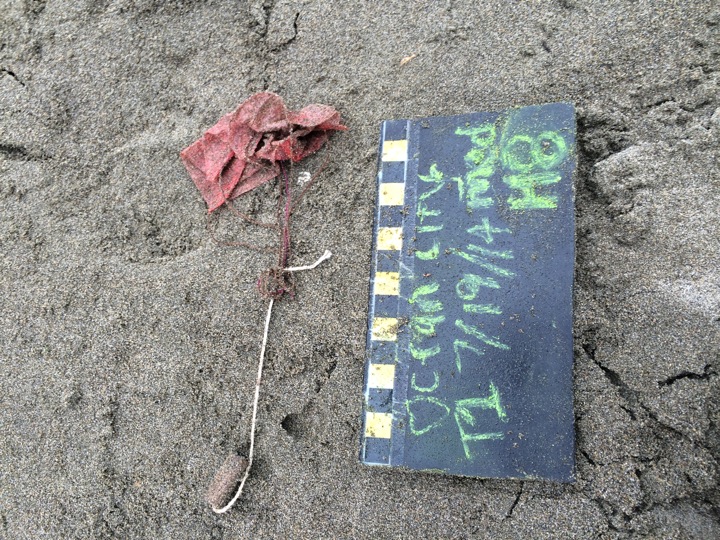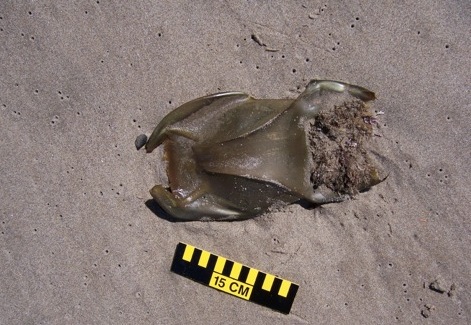Hi COASSTers,
Hope you’re all enjoying the start of Spring! It’s been a busy month at COASST, with national and regional media attention. Executive Director Julia Parrish was recently featured on the March 20 edition of Science Friday, COASST data were featured in the recent Pacific States Fisheries Management Council Meeting, as #9 of the 12 main highlights in the California Current Integrated Ecosystem Assessment (CCIEA), State of the California Current Report, 2015, and a number of COASSTers were featured in recent news coverage. A big thanks for all of your hard work! Check out the latest on our website in the COASSTal News section. We’re so proud to have all of you representing COASST!
Let’s take a look at what’s washed in recently:

Anchor River Recreation Area (AK) 03/14/15 found by Lisa
Bill: 45
Wing: 20
Tarsus: 39
Alaska Foot Key – page 34
West Coast Foot Key – page 22
Choose webbed (go to Q2), choose completely webbed (go to Q3), choose three toes: all webbed (go to Q4), choose foot not huge – STOP: Alcids.
Alaska Guide
On AL1, veer left – wing chord is more than 15cm. Bill is dark, slender and featureless, upperwing is dark –check out these four species:
Common Murre (AL3)
Thick-billed Murre (AL5)
Pigeon Guillemot (AL7)
Black Guillemot (AL7)
Look carefully – the face has a dark eyeline, or “tearline” – (see key character 2 on the AL3). The Thick-billed Murre has a dark face with a white chin. Non-breeding guillemots with white underparts lack this eyeline; the bill, wing and tarsus measurements for this bird do not fit for the PIGU or BLGU. Common Murre – correct!
West Coast Guide
On AL1, veer left – wing chord is more than 15cm. Bill is dark, smooth/slender and featureless, investigate these two options:
Common Murre (AL2)
Pigeon Guillemot (AL10)
The bill, wing and tarsus measurements do not fit for Pigeon Guillemot and the underwing is white – Common Murre – great work!

Ruby South (WA) 1/20/15 found by Janis and Jody
Bill: 17 mm
Wing: 13.5 cm
Tarsus: 18 mm
Alaska Foot Key – page 34
West Coast Foot Key – page 22
Choose webbed (go to Q2), choose completely webbed (go to Q3), choose three toes: all webbed (go to Q4), choose foot not huge – STOP: Alcids.
Alaska Guide
On AL1, veer right – wing chord is less than 15cm. Bill is dark, without a spot – one of the murrelets:
Marbled Murrelet (AL17)
Kittlitz’s Murrelet (AL19)
Bill is too long for a KIMU and the eye is within the dark part of the face – Marbled Murrelet – nice!
West Coast Guide
On AL1, veer right – wing chord is more than 15cm. Bill is dark, so we’re left with a few options:
Common Murre-juvenile/chick (AL4)
Marbled Murrelet (AL14)
* Ancient Murrelet (AL16)
* Kittlitz’s Murrelet (AL20)
* Least Auklet (AL24)
* Whiskered Auklet (AL26)
(* = rare, included in the 2002 version only)
Not a Common Murre chick – it’s January! And besides, this bird has white shoulder patches and dark secondaries and no dark eyeline. Measurements fit for Marbled Murrelet, but let’s examine the rarities:
Ancient Murrelet – nope, dark shoulder
Kittlitz’s Murrelet – nope, bill too small
Least Auklet and Whiskered Auklet – nope, bil and wing too small
Yep, it is a Marbled Murrelet.



Mike and Chiggers’ marine debris surveys at Norwegian Memorial (WA) tell an interesting story. Their beach consistently catches A LOT of bottles and bottle fragments, many with Asian writing. Seen here is the haul from a single zone in a single transect. A well weathered Puma shoe also washed up for their December survey. The stitching and lace holes make us think these are “vintage”. Do they remind anyone else of basketball practice in the 70s?

Washington COASSTers Lee and Sue were lucky enough to come across this Humboldt squid during their February survey of Three Crabs Beach.
Also referred to as Jumbo squid, these giants are able to swim with speeds of up to 15 miles per hour and are known to eject themselves from the water to escape predators. While the coloring of this squid is mostly white, these cephalopods are able to change their appearance in shades of purple, red and white.
Seen something on the beach you’ve always wondered about? Send us a photo!

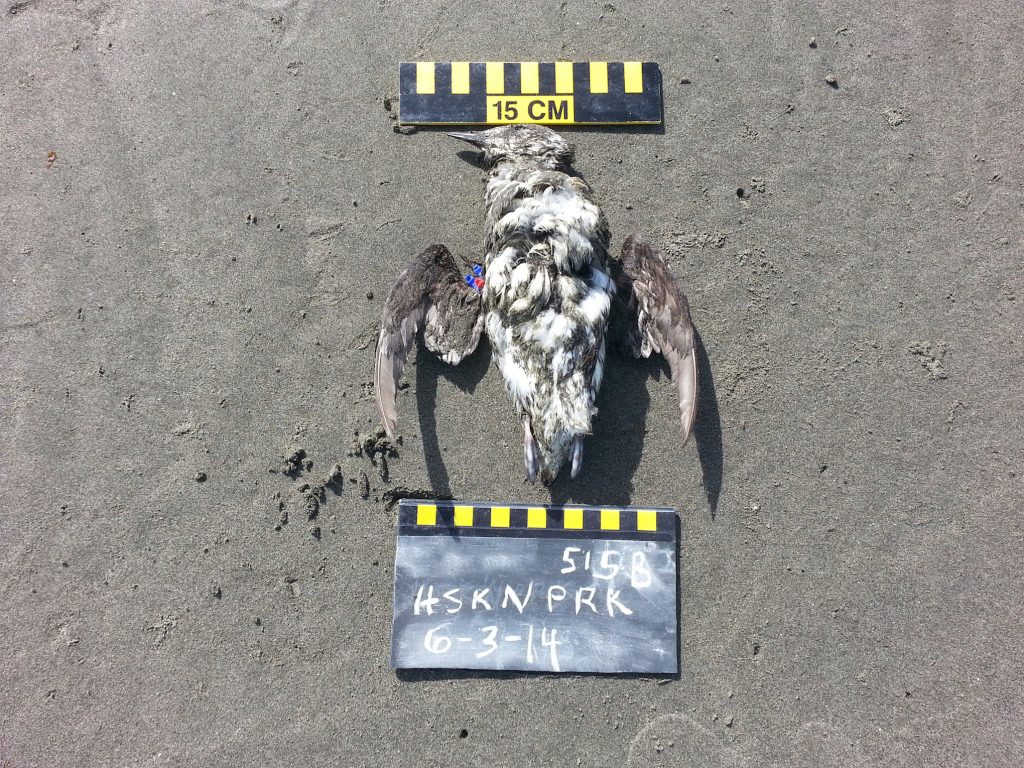
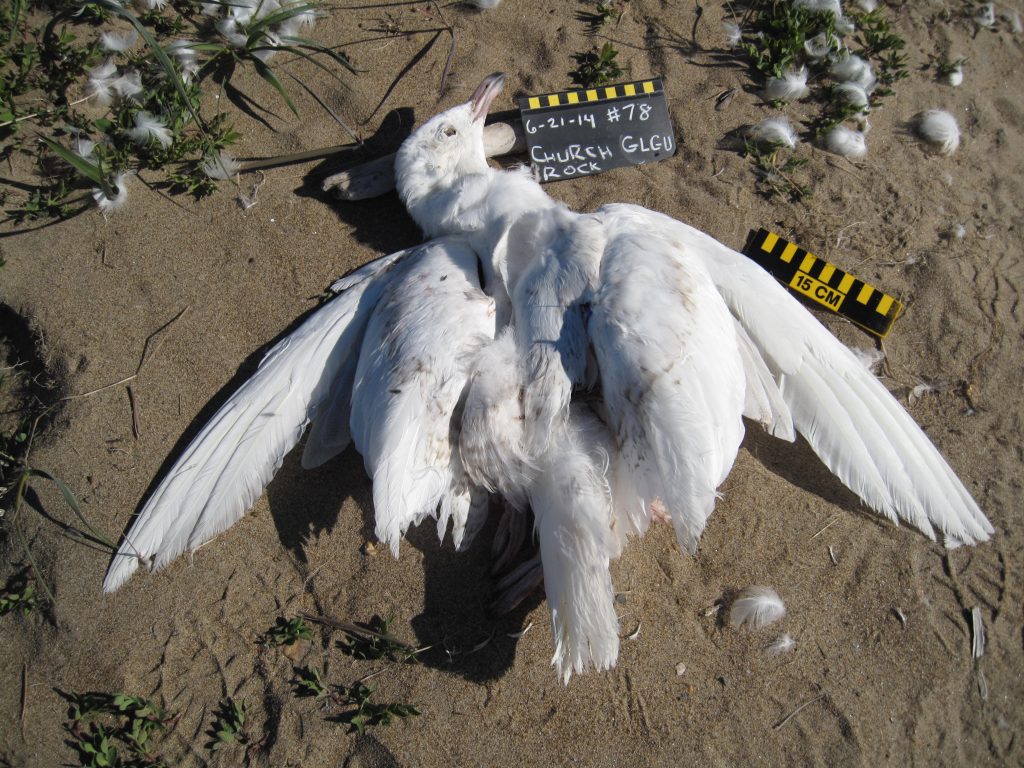 Bill: 54 mm, Wing: 44 cm, Tarsus: 67 mm
Bill: 54 mm, Wing: 44 cm, Tarsus: 67 mm Bill: 50 mm
Bill: 50 mm